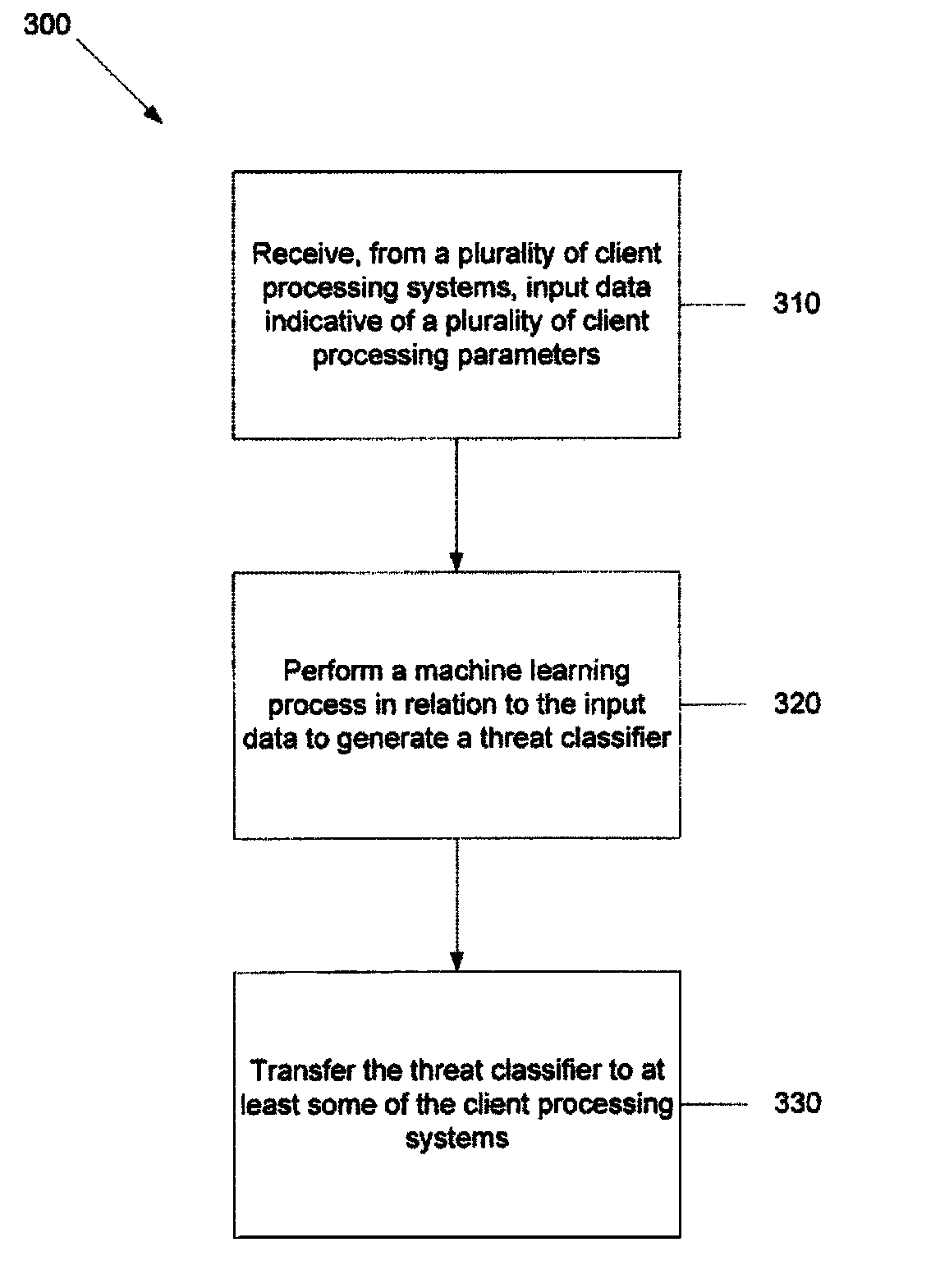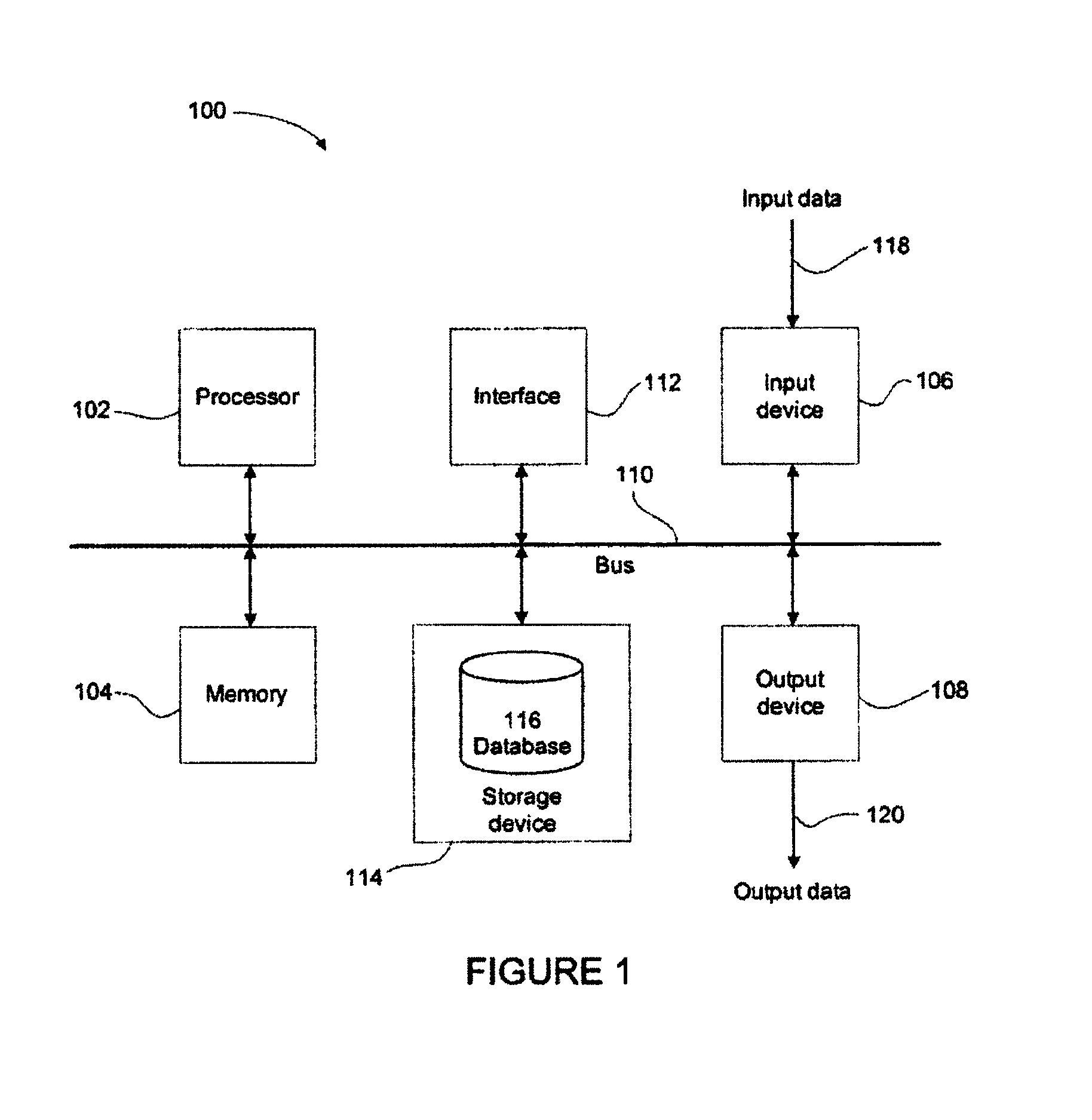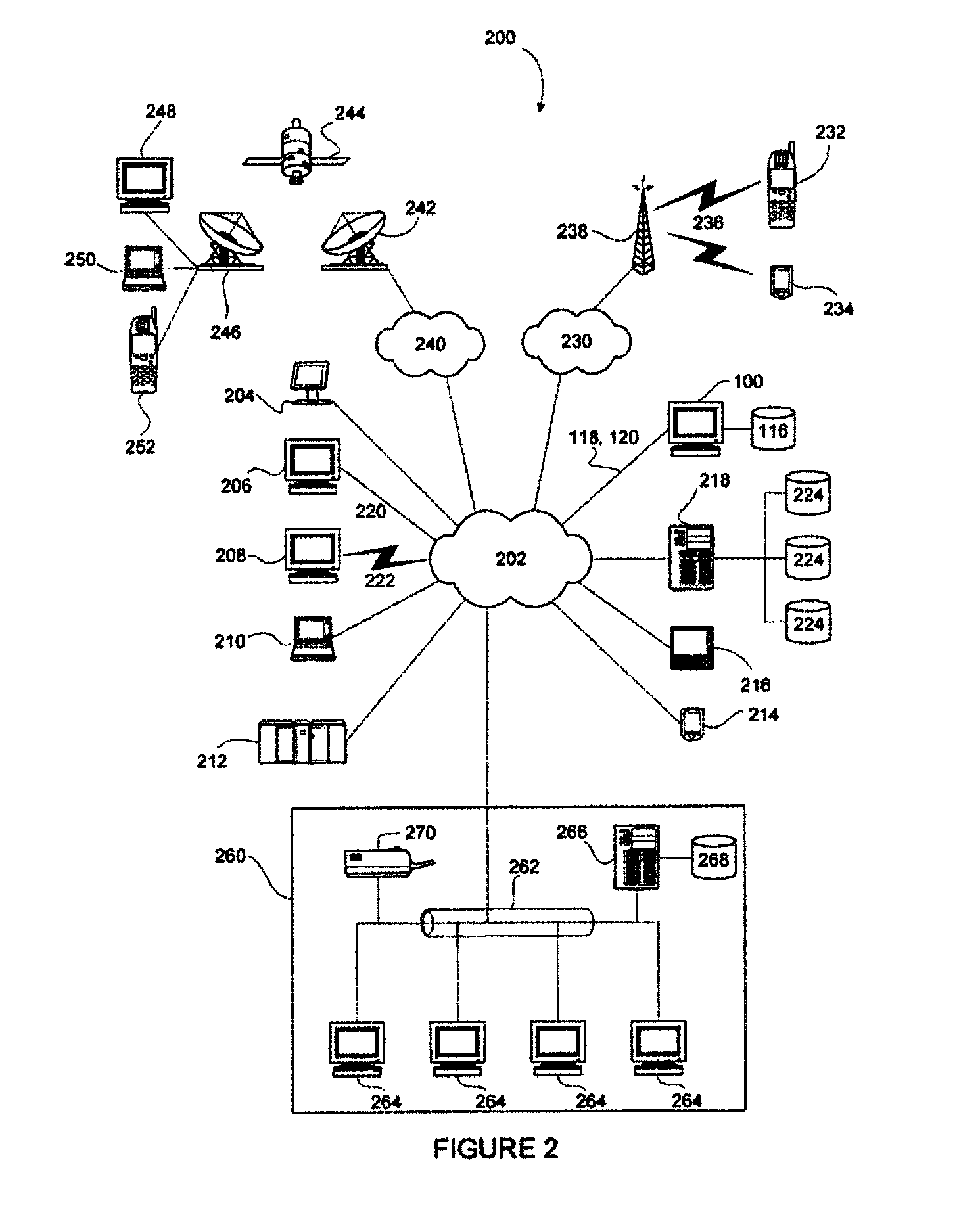Systems and methods for generating a threat classifier to determine a malicious process
a technology of threat classifier and classifier, which is applied in the direction of unauthorized memory use protection, error detection/correction, instruments, etc., can solve the problems of user fatigue, user may not be trained in distinguishing between threat action and legitimate action, and user analysis may be considered inaccura
- Summary
- Abstract
- Description
- Claims
- Application Information
AI Technical Summary
Benefits of technology
Problems solved by technology
Method used
Image
Examples
Embodiment Construction
[0022]In a networked information or data communications system, a user has access to one or more terminals which are capable of requesting and / or receiving information or data from local or remote information sources. In such a communications system, a terminal may be a type of computer, computer system, processing system, computerised device, personal computer (PC), mobile, cellular or satellite telephone, mobile data terminal, portable computer, Personal Digital Assistant (PDA), pager, thin client, or any other similar type of digital electronic device. The capability of such a terminal to request and / or receive information or data can be provided by software, hardware and / or firmware. A terminal may include or be associated with other devices, for example a local data storage device such as a hard disk drive or solid state drive.
[0023]An information source can include a server, or any type of terminal, that may be associated with one or more storage devices that are able to store...
PUM
 Login to View More
Login to View More Abstract
Description
Claims
Application Information
 Login to View More
Login to View More - R&D
- Intellectual Property
- Life Sciences
- Materials
- Tech Scout
- Unparalleled Data Quality
- Higher Quality Content
- 60% Fewer Hallucinations
Browse by: Latest US Patents, China's latest patents, Technical Efficacy Thesaurus, Application Domain, Technology Topic, Popular Technical Reports.
© 2025 PatSnap. All rights reserved.Legal|Privacy policy|Modern Slavery Act Transparency Statement|Sitemap|About US| Contact US: help@patsnap.com



